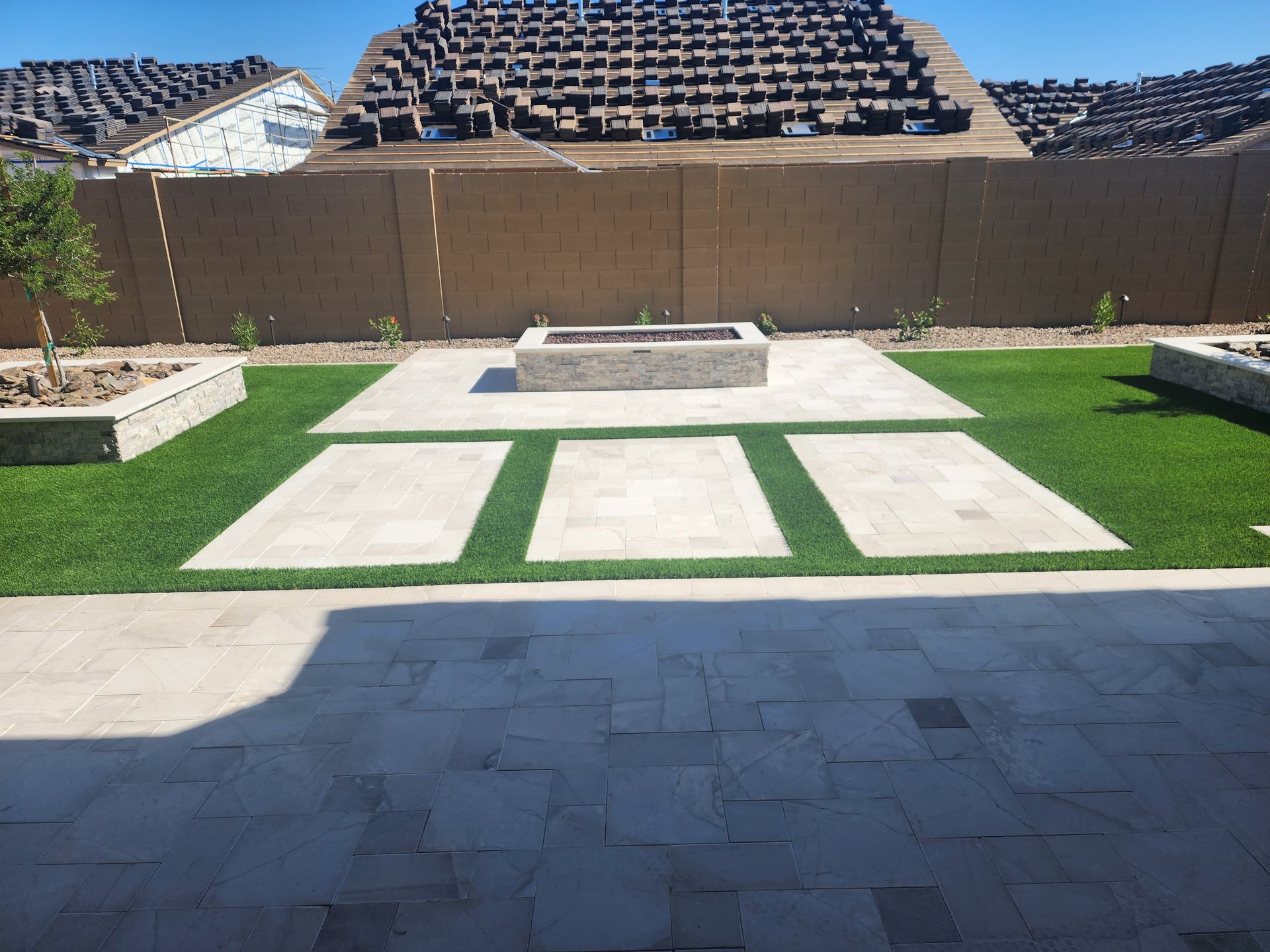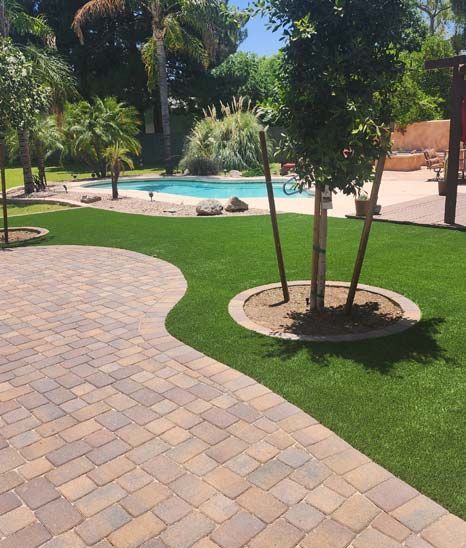Everything You Need To Know About Low-Water Landscape Design In Arizona

Low-water landscape design in Arizona is an important topic for anyone living in this desert climate. From sustainable gardens to xeriscaping, there are many considerations when it comes to designing a yard that uses minimal water resources.
Today, we'll provide you with everything you need to know about low-water landscape design in the Grand Canyon State. From understanding soil composition and plant selection to learning practical tips on maintenance and irrigation strategies, our goal is to help make your Arizona garden dreams come true!
With some thoughtful planning and careful consideration of local conditions, you can create a beautiful outdoor space that's both environmentally friendly and aesthetically pleasing. Read on to discover all the details you need to get started!
Understanding Soil Composition
Understanding the soil composition of Arizona is essential for successful low-water landscape design.
The native soil in Arizona is sandy and porous, making it difficult to retain water and nutrients - two key elements needed for healthy plant growth.
To make up for this, one must consider implementing a strategy that captures more rain water than what's naturally available.
Water harvesting can be used to supplement native soils with additional water, especially during times of drought or extreme heat.
This will ensure that plants receive enough sustenance throughout their lifespan.
Plant Selection & Placement
Landscaping in Arizona isn't complete without the selection and placement of plants. You can create a low-water landscape design that is both beautiful and efficient by choosing native plant types that thrive in the area's hot, dry climate. There are plenty of drought-resistant species to choose from, each providing unique benefits for your yard.
One option often seen in Arizona yards is cacti and succulents. These desert plants feature thick stems or leaves which help store water during droughts, making them incredibly hardy even with minimal watering. From large saguaro cacti to smaller prickly pear varieties, there are many ways to incorporate these spiny beauties into your design. Plus, they require very little maintenance once established!
Native flowering shrubs also make great additions to any low-water landscape. Not only do they provide vibrant color throughout the year, but they also attract beneficial insects like bees and butterflies while deterring pests from other parts of your garden. Some of the most popular include desert marigold, smoke tree, and lupine – all perfect for adding beauty to an Arizona yard!
Sustainable Gardening Practices
Sustainable gardening practices are essential in the arid climate of Arizona. To ensure a healthy landscape, there needs to be an understanding of water conservation techniques and how they interact with desert ecosystems. Native pollinators play a crucial role in maintaining plant health and creating habitats for wildlife.
A sustainable garden starts with thoughtful planning that considers factors such as soil type, sun exposure, drainage, available resources, and temperature extremes. A well-planned garden can help conserve water by using native plants, which will require less supplemental irrigation than non-native varieties. Additionally, choosing drought tolerant species can reduce the need for frequent watering while still providing vibrant colors and textures throughout the year.
Mulching is another excellent way to save water in your garden – it helps keep moisture levels consistent for plants and prevents evaporation from occurring too quickly. It also provides valuable nutrients to soils and conserves warmth during cooler months.
Xeriscaping Principles
Xeriscaping has become a popular landscape design choice in Arizona, due to the state's arid climate and frequent periods of drought. By embracing native plant species and using water-saving techniques such as rain harvesting, it is possible to create an attractive outdoor area that can thrive despite these harsh conditions.
Native plants are key when creating a low-water landscape in Arizona because they not only require less water but also offer more resistance to pests and diseases. As well as helping reduce irrigation costs - sometimes by up to 50% - incorporating native flora into your xeriscape will help attract local wildlife while providing habitat for birds, bees and other beneficial insects.
Rain harvesting systems are another great way to conserve water in the garden, enabling you to collect rainfall from roofs or other surfaces before storing it safely for later use on lawns and flower beds. Not only does this practice ensure efficient use of resources, but it also helps prevent flooding during heavy downpours.
With thoughtful planning and careful selection of materials, you can have a beautiful outdoor space that keeps both your wallet and the environment happy!
Maintenance Strategies
As homeowners in Arizona strive to create a low-water landscape, maintenance strategies become increasingly important.
Adaptive pruning and mulching techniques are two essential methods that should be employed when caring for these kinds of landscapes. Pruning helps determine the shape of trees and shrubs while also allowing light and air to penetrate. When done correctly, it can reduce water needs by up to 30%.
Mulching creates an insulation layer which reduces evaporation from the soil surface, thus conserving moisture in the ground. It is important to note that both adaptive pruning and mulching need to be adapted according to climate conditions in order for them to work effectively.
When dealing with climates such as Arizona’s, where extreme temperatures fluctuate rapidly during different times of day or year, one must take special precautions so that plants don't suffer too much shock due to those changes.
This means selecting appropriate plant species that thrive in arid regions and using proper irrigation techniques. For example, drip systems are better suited than sprinkler systems because they deliver more water directly into the roots without wasting any on runoff or evaporating off before reaching its intended target.
Irrigation Techniques
Now that we’ve discussed the various maintenance strategies for low-water landscapes in Arizona, let’s turn our attention to irrigation techniques.
Irrigation is an essential part of any landscape design and it can be done effectively with a minimal amount of water. In arid climates such as Arizona, choosing the right type of irrigation system is key.
Drip irrigation systems are ideal for this climate due to their efficient use of water. These systems deliver water directly to each plant or group of plants through small tubes connected to a main source. This allows you to control exactly how much water each area needs, making them extremely economical and effective when compared to traditional overhead sprinklers. Drip irrigation also helps prevent runoff, which reduces the amount of soil erosion that occurs over time in your yard.
By reusing greywater on your property instead of letting it go down the drain you can reduce both your indoor and outdoor water consumption substantially while still keeping your landscaping looking its best.
Low-water landscaping doesn't have to mean sacrificing aesthetics – with proper planning and thoughtful implementation of smart irrigation techniques like drip systems and greywater reuse you can create a beautiful yet drought tolerant yard that will thrive year round in the desert climate!
Water Conservation Tips
Low-water landscape design in Arizona is essential to conserve water and keep the desert environment healthy.
Fortunately, there are several simple ways to minimize your water usage while still maintaining a beautiful outdoor space.
Rain catchment systems can be installed on roofs to capture rainwater for later use. This captured water can then be used for plants or even drinking with proper filtration.
Greywater reuse is also an effective way to save water outdoors; this includes using non-potable wastewater from showers, baths, laundry machines, and dishwashers for irrigation purposes.
These strategies require minimal effort yet offer great rewards when it comes to reducing our impact on the environment by saving valuable resources like water.
By implementing some or all of them into your low-water landscape designs in Arizona, you'll soon find out just how much of a positive difference you're making – both now and in the future!


